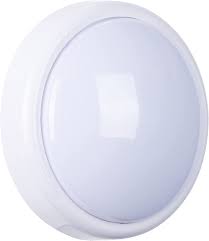Student Contributor: K. Wale
 Similar to Silent Hand or Quiet Coyote already listed on this website, Silent Light is another attention-getter technique to quickly transition, or bring the noise level down when the classroom becomes too loud. Turn the silent light on when attention is needed and listen as your students begin to settle down once they notice the light is on.
Similar to Silent Hand or Quiet Coyote already listed on this website, Silent Light is another attention-getter technique to quickly transition, or bring the noise level down when the classroom becomes too loud. Turn the silent light on when attention is needed and listen as your students begin to settle down once they notice the light is on.
To be most successful with this silent light, make sure the light is placed in an area of the classroom that can easily be seen. For example, it could be on the whiteboard in the front of the classroom, or whichever wall the student’s desks are facing. The silent light can be used in different ways, but the main idea is that it is a signal to students that it is time to direct their attention back to the teacher. This can be used for transitions, or simply to signal to students that the noise level is too high. Whichever use is the best fit for your classroom, the rules for your silent light need to be set up at the beginning of the year to not confuse your students with the different uses.
I put silent light in the preventative phase category because it is a tool that a teacher would set up at the beginning of the year. This ensures that the students are aware of the procedure so the use of the tool is effective. The preventative phase lays the framework that guides student behavior. The silent light is a tool that can guide a student's behavior. This also can support the supportive phase is that technically happens during learning in the supportive phase, but the best fit is still the preventative phase. There isn't a clear connection to the corrective phase. For theories of influence, it could fit within any, but I chose student-directed and collaborative because it is a transition tool that is geared towards students.
More Information –
Tool Source: This tool was inspired from the Silent Hand tool and is also another take on a stoplight used for noise level. The link below provides lots of great ways to use a tap light in your classroom.


I used this tool with 19 fourth graders in a suburban school. This tool was very easy to implement into the classroom as well as use. It was placed on the white board next to the teacher’s desk, for the entire class to see. When students are working, the light is turned to red to symbolize zero voice level. I noticed that when the tool is used and reminded of, the students respond to the tool well, almost no talking at all. The students were able to understand the purpose of the tool when being implemented as there is a class culture of no talking when working on specific assignments. If I were to edit this tool in any way, I would use a light that has a color adjustment so that the voice levels can be controlled. For example, red light means zero talking, blue light means whispers, white light means classroom voice level.